Excerpts from Jim Conrad's
Naturalist Newsletter
from the December 4, 2016 Newsletter issued from Rancho Regenesis in the woods ±4kms west of Ek Balam Ruins; elevation ~40m (~130 ft), N20.876°, W88.170°; north-central Yucatán, MÉXICO
PIGEON PEA
Here at the rancho, over the years various Bean Family species have been planted but the identities and planned uses fof the various species have been forgotten or never known in the first place. That was the case with the lanky, seven-ft-tall (2m) woody shrub or small tree shown below:
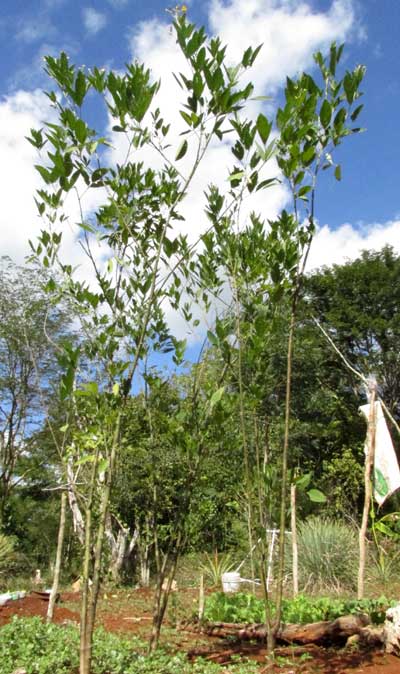
Since my arrival here this plant has borne neither flowers nor fruits, but I knew it was a Bean Family member because its trifoliate leaves were similar to many species in that family, plus they bore conspicuous, slender stipules at their petiole bases, which is very typical of leguminous species. Below, you can see the shrub's trifoliately compound leaf:
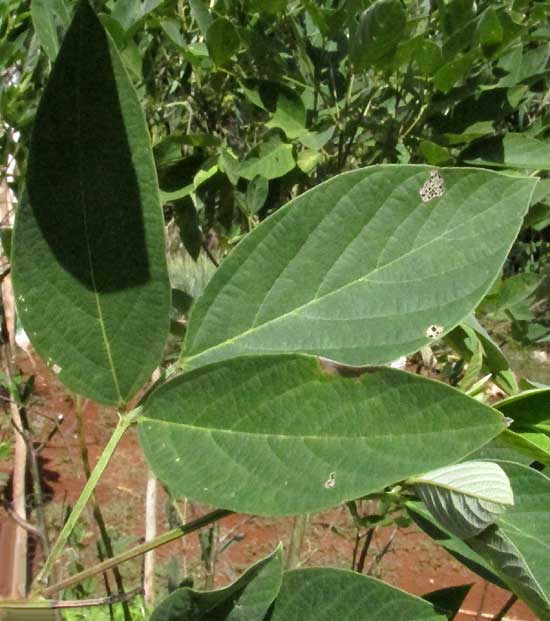
Last week the shrub began issuing flowers, so now I've identified the plant. The flowers were yellow ones that clustered at the tips of the bush's upper branches, as shown below:

They were papilionaceous blossoms, like those of most Bean Family species, meaning that of the five petals the top one, called the standard or banner, expanded bove the flower; two side petals, called wings, grew at the blossoms' sides, ;and the two lower petals were united along their common margin into a scoop-shape structure, known as the keel. Below, you can see a flower with these features:
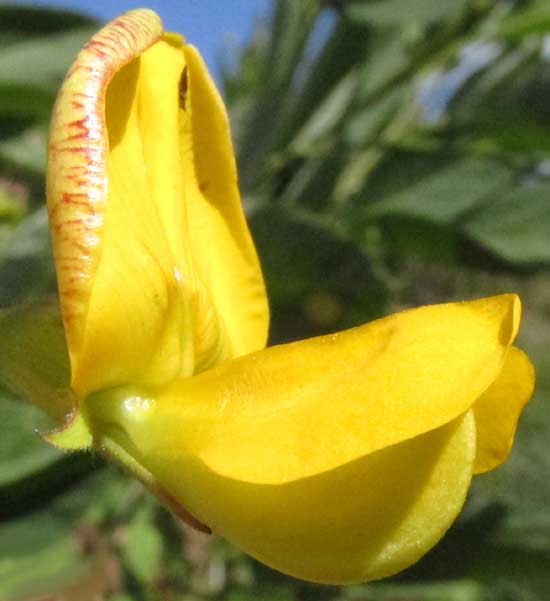
Though otherwise that's a typical papilionaceous flower, one distinction to notice is that its vertically rising standard's margins curl inward. Other features of the blossom aiding with identification can be seen from the flower's rear, shown below:
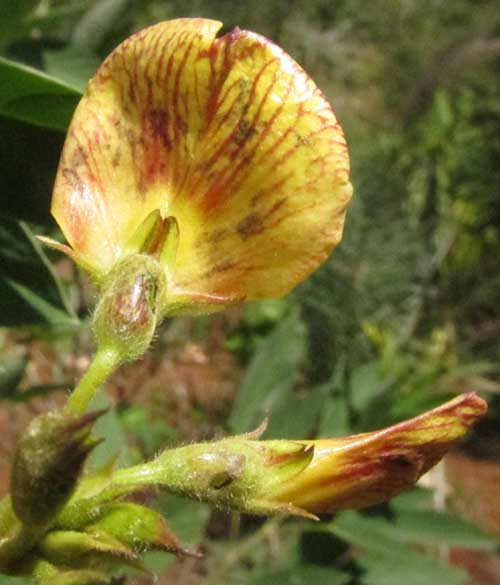
The purplish-brown veins on the standard's back are eye-catching, but I read that only some cultivars of this species display such coloration. More important for identification is how the calyx's two uppermost sepals join together along their common margin, looking like one thick sepal with a notch at its tip. In the above photo this feature is nicely shown at the bottom of the open flower's standard.
Though the bush's flowers aren't unusual, the above features along with the fact that this Bean Family member forms a woody shrub or small tree with trifoliate leaves, it was easy to identify this plant as the Pigeon Pea, CAJANUS CAJAN, sometimes also called Congo Pea, Red Gram and Yellow Dahl.
Pigeon Pea is native to an area from India and Afghanistan to tropical eastern Africa, but now is widespread and cultivated throughout the world's tropics and subtropics. Mainly it's grown for its beans, for human consumption, but the plant's young stems and leaves can be fed to livestock, either fresh or dried, so for both reasons in much of the world it's considered a very important plant. Maybe one reason it was brought here was that the species is particularly well adapted to survive in regions with very long, severe dry seasons, like ours. The plant has very deep taproots.
It'll be weeks before our plants'flowers produce legumes bearing mature beans, but already I know what Pigeon Pea beans look like, because our Maya worker Juan showed me some from the bag from which earlier he'd sown the plants in our pictures. Below, you can see that in comparison to the width of my fingers they're quite small:
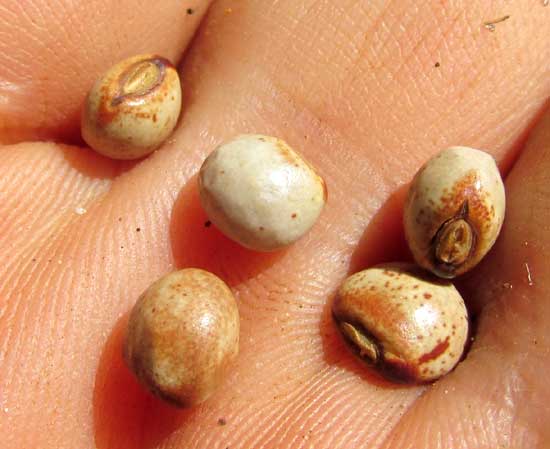
Nutritionally, Pigeon Pea beans are especially good sources for vitamins B1 and C, and folate. In India, split Pigeon Peas are used for the famous dish called dal. They have a fairly high protein level and are important for vegetarian dishes. One way to eat them is as sprouts, in which the beans' nutritive value is dramatically increased, and sprouting them is precisely what I plan to do once I have enough beans.
It's a pleasure meeting these species who are so important in much of the world. Much more about Pigeon Pea can be learned on Wikipedia's Pigeon Pea page.